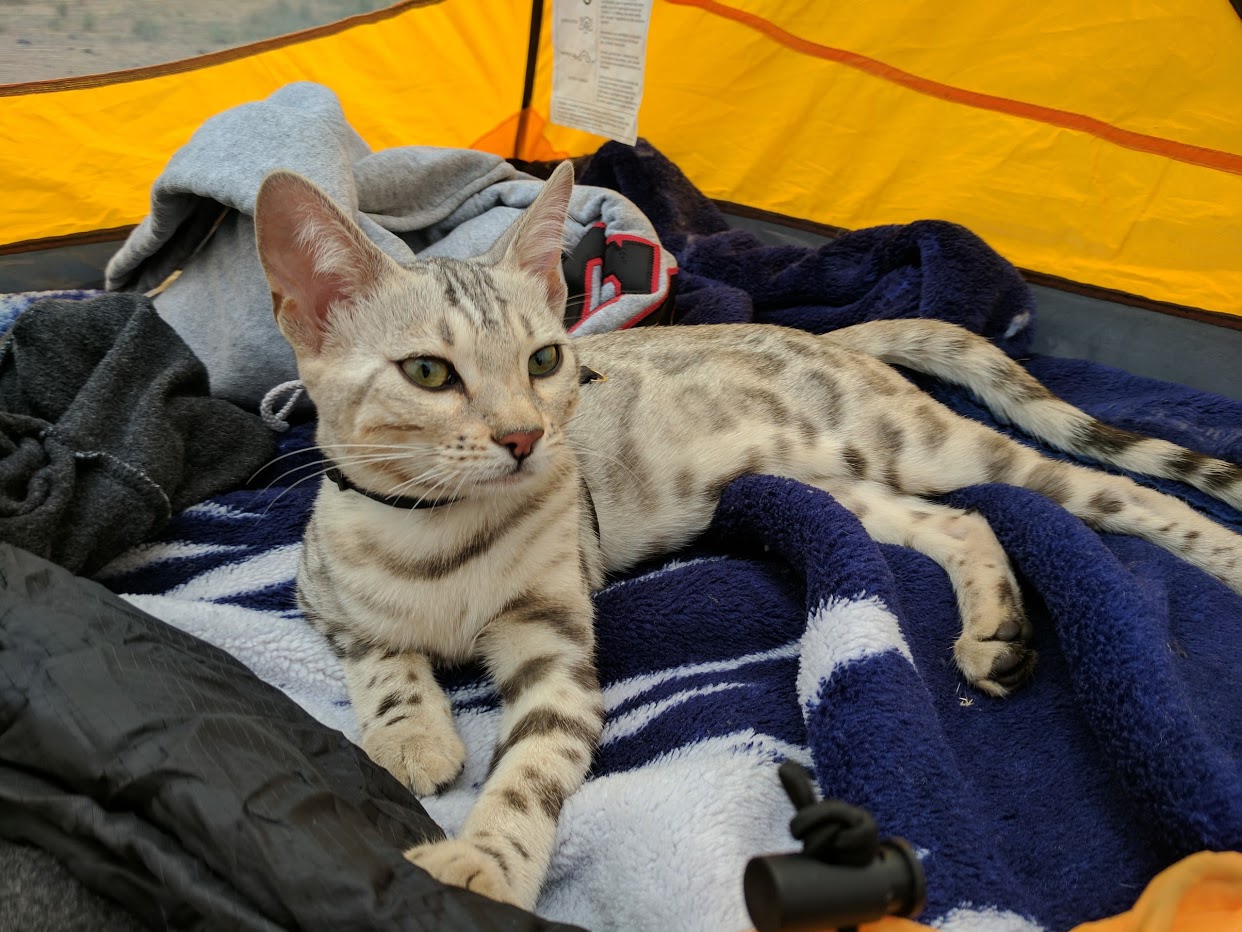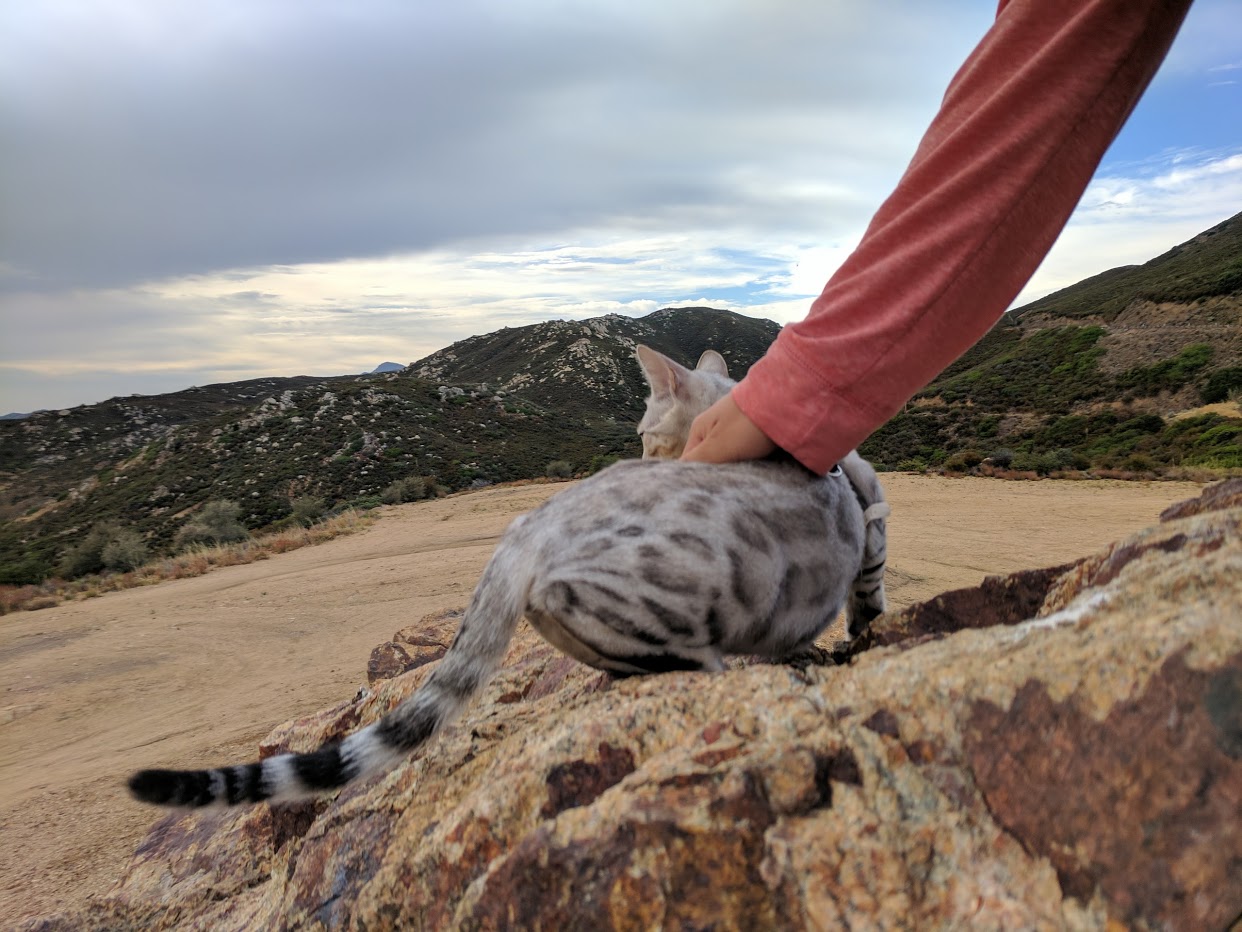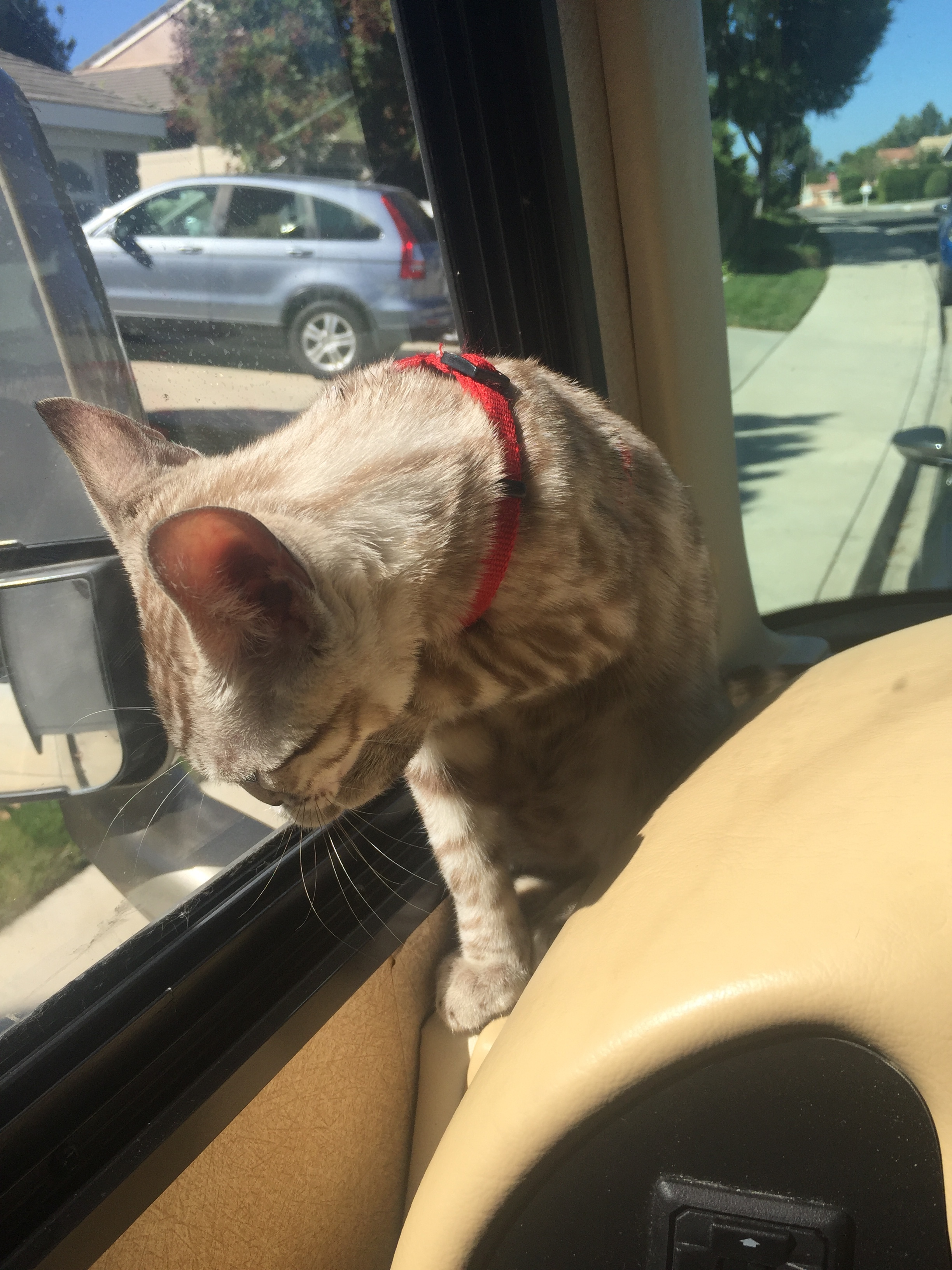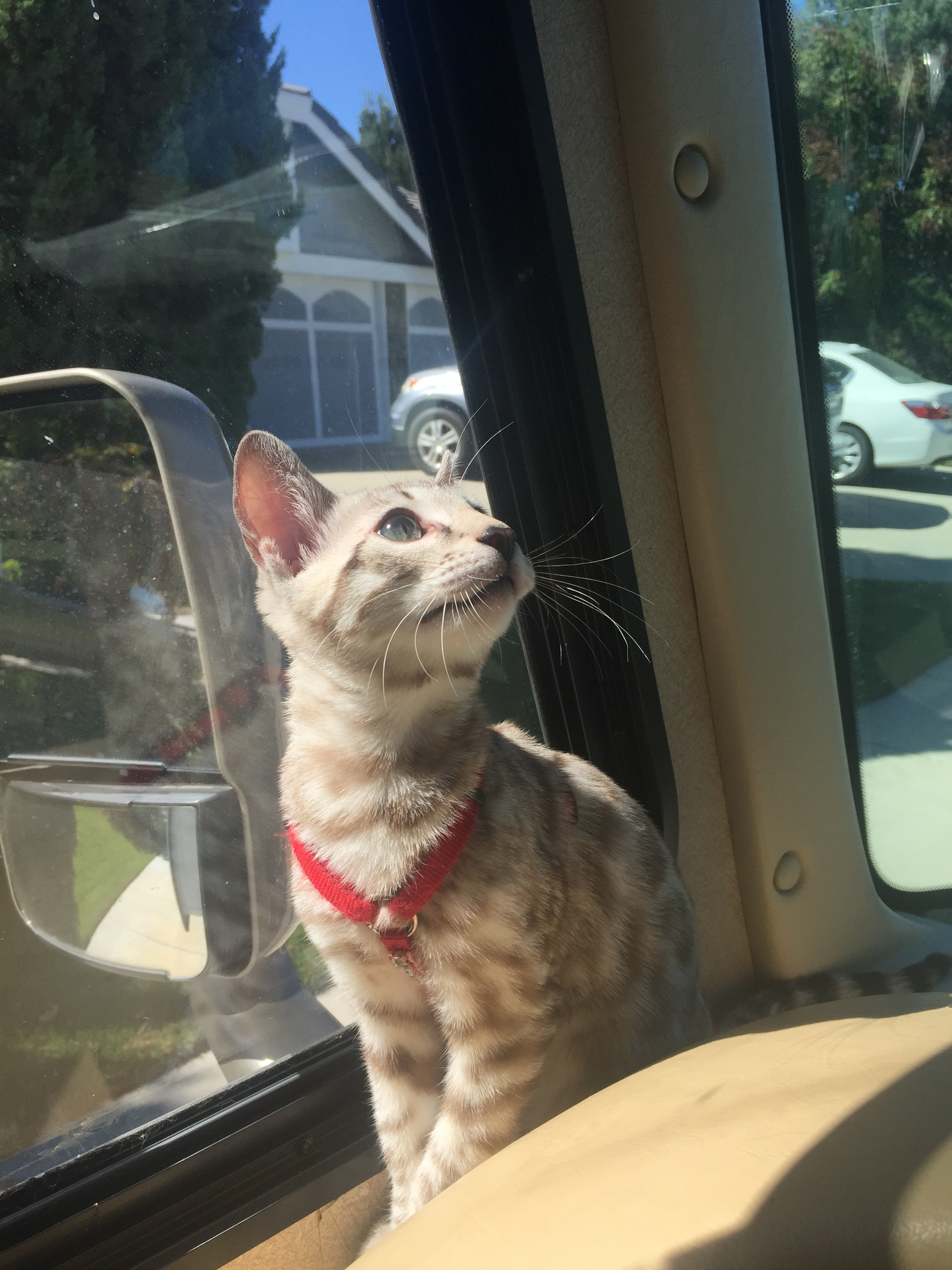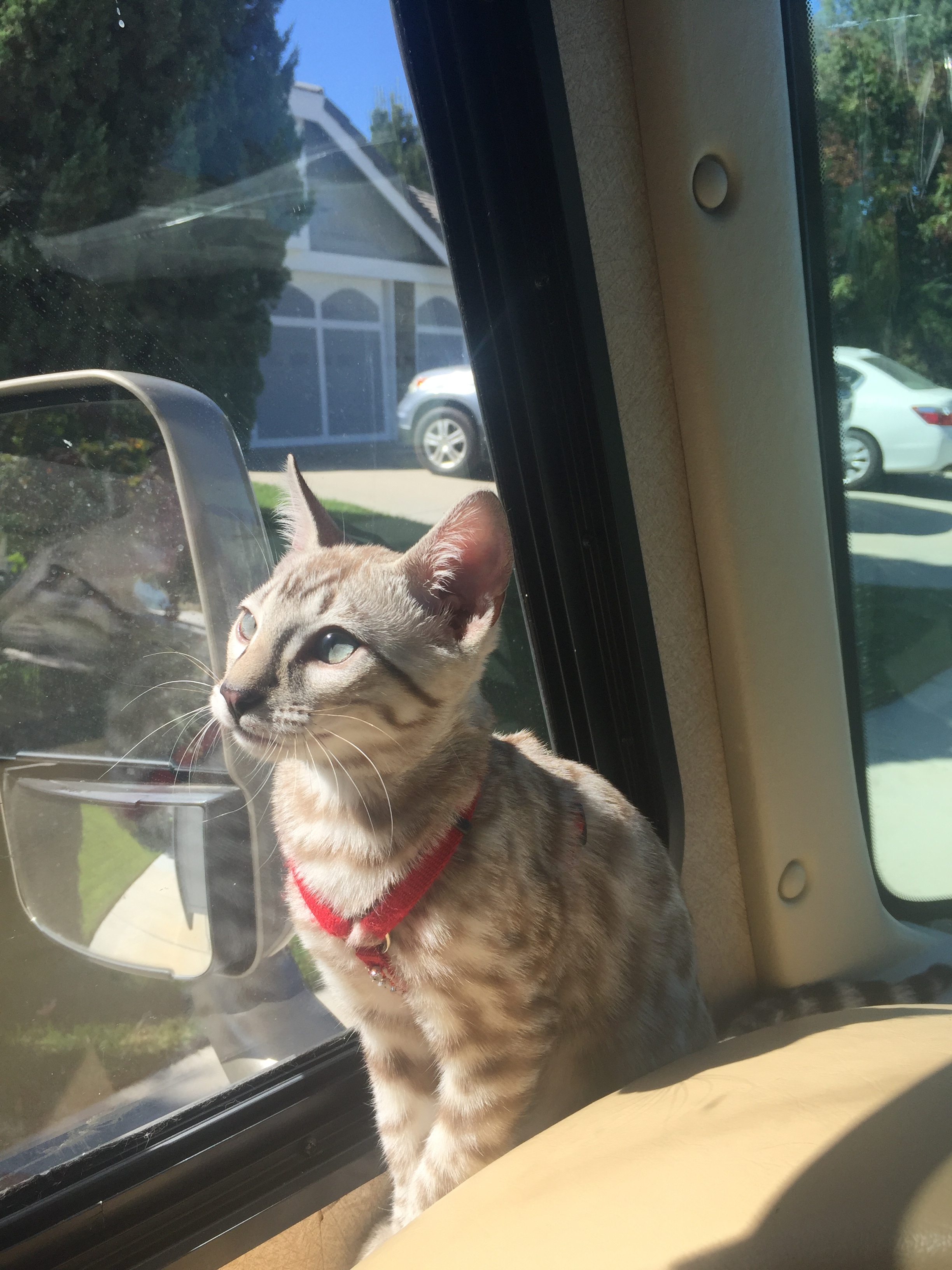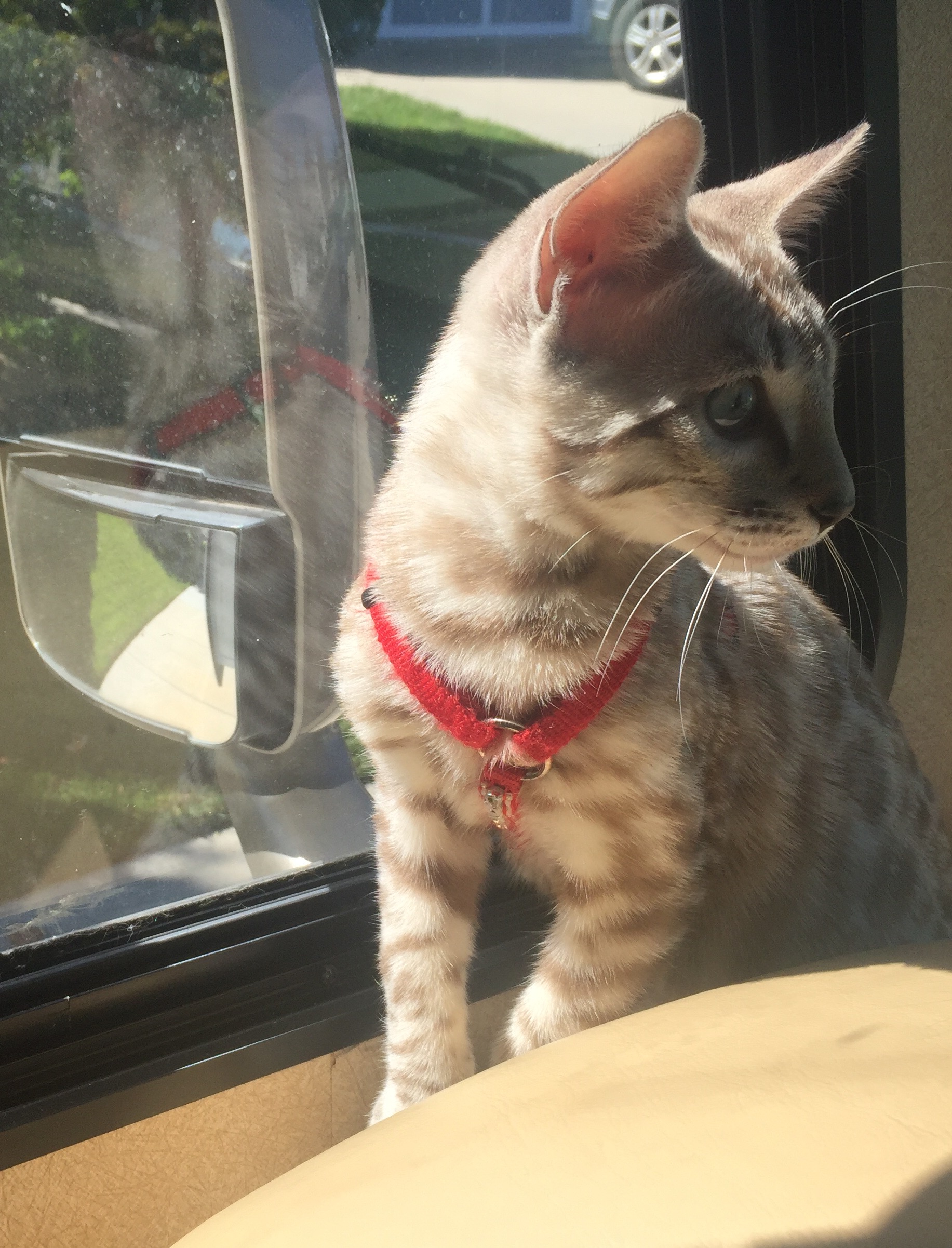Your New Bengal Kitten
Imprinting
Early life, especially the first 16 weeks, and also in the following few months, whatever your kitten experiences, he will consider to be normal. It is so important that he forms loving relationships with people during this time. He can absorb an immense amount of material and process it into the realm of normal. Later, when he is presented with this familiar sensory information, he will be fine with it. After a cat has grown up, and the imprinting period has closed off, each stimulus that the kitten perceives has to be individually determined to be either friendly or a threat. So learning goes at a slower rate.
We lavish the kittens with lots of love and attention during the imprinting period,and all of that love will be transferred to you when you become their forever family. We handle them all over and work on imprinting them to the important things while they are young so they will have a happy life with you!
Then when you get your kitten, continue the imprinting. So....what ever you intend to do with your kitten, start within the first month. If you envision yourself walking your kitten on a harness, let us know and we will familiarize your kitten to the harness and provide you with a training harness at no additional fee. If you plan to go beach camping in the motor home, start with some short trips in the first few months. Nail trimming is essential and baby steps with the kitten add up to a much easier time later. Think you might want more than one cat someday? Sooner is better than later. The first year or two are the golden time to add a feline buddy for your kitten. If you want an easier time at the vet, have some happy kitten visits before actual work needs to be done. And by all means, continue carrier training by having your kitten’s carrier be part of their normal habitat with occasional treats and toys placed inside.
Jungle Music Bengal Sadie going for a hike in the mountains with her owner!
Harness Training
Start young. Kittens adapt quickly to a harness. Older cats may topple over sideways like they think they are paralyzed and do not want to move when a harness is in place. They can still get used to a harness but it is infinitely easier for a kitten t adapt.
Fit or have a professional help you fit the harness to your kitten. It is most important that the kitten can’t back out of the harness, pulling it over his head and getting loose, especially when outdoors.
Getting Started: Practice the motion of putting the harness on so that you are able to do it swiftly to your kitten, then reinforce with praise, treats or food. Pull out the favorite toy. I especially like the feather on a fishing pole device such as “da bird”. Distracting the kitten with a highly preferred activity such as chasing the toy goes a long way to getting his mind off the harness. Leave the harness on longer and longer intervals as the kitten learns to tolerate it. But of course, don’t leave the kitten unsupervised with the harness on.
Next step is to attach the lead. Flexible springy leads are nice, so the kitten does not hit an abrupt stopping point while learning to explore on the lead, but also following the kitten around with the lead attached works well. Walking a kitten on a leash looks and is more like the kitten walking you at first. Well-traveled paths are a good way to walk the kitten so there are some guidelines as to which way to go, but again, if she wants to stop and smell something or roll on a particularly nice bunch of grass, you may realize it takes patience to walk a kitten. But, isn’t the whole idea to watch her have fun?
Gently guiding him, especially to predetermined places where a reward may be found is the best way to teach the kitten to accept guidance by the leash.
Carrier and Car/Camper/Motorhome Training
This is all about habituation, or just getting the kitten used to stuff while the kitten is young.
Carrier training: Start by having the carrier be a part of the normal household furniture and day to day activities. You can cover it with a pretty blanket so that it fits in with your decor better. The hard carriers with top and front openings are especially suited, but you can use whatever carrier you have.
Put a soft blanket or crate bed inside. Occasionally throw a treat or two inside. Using cat toys, play with your kitten in and around the carrier so that it becomes a fun place, a safe place, and a maybe even treat place. You can even train your kitten to go into the carrier on command by pairing a treat with a certain distinct sound or word. Clickers are nice, but you don’t need to buy a clicker to “clicker train” your kitten, your mouth is always available when the clicker may not be. Just choose that distinct sound that you want, and make that sound as your kitten eats his favorite treat in the carrier, then make the sound as the kitten sees you throw the treat into the carrier….and so on. Bengals are smart and love to play games, enjoy!
The first carrier trips, which may at first be just across the room, should end on something fun or favorable, and lots of praise. And carry the carrier up close to your body to comfort your kitten, and avoid jostling or swinging motions. Gradually increase length of trips.
When you get to the car, the safest place for the carrier is on the floor in the back seat. Familiar toys and blankets in the carrier are helpful. Pheromone wipes or sprays can also send a peace sign to the kitten. If using the spray, spray the inside of the carrier 15 minutes before you ask your kitten to enter to give the alcohol in the spray to dissipate, leaving just the good pheromone chemicals behind to send a peaceful message to your kitten. The go to the places you intend to go to as your cat grows up. Find a veterinarian, of course, I recommend A Cat’s View Veterinary Hospital, where you will find me! But seriously, find a veterinarian that is on board for a fun healthy kitten visit or two. Often these visits can be incorporated as free visits as part of a kitten health plan. Ask your vet!
Carrier training, like so many things, is best done in many small doses when the cat is young. Waiting until kitty is older, and has already tried to determine what is safe and what is not safe, to throw the cat forcibly into a foreign box to go to an unfamiliar place…. Is it any surprise that it just doesn’t go well. The good news, is that the effort put in to kitten-hood and reinforced periodically goes a long way to making the rest of your Bengal’s life more fun and less stressful for both of you.
Nail Trimming
I hope you already understand that declawing is flat out bad. When the cat scratches and stretches, it’s like her kitty yoga. She is stretching, grooming her nails, relieving stress and leaving subtle and self comforting messages on the object she is scratching. Being able to leave these messages is soothing and can help prevent more potent message leaving, such as "Pee-mails". Declawing is more than just removal of the claws. Look at your hand and bend your fingers. Not just the fingernails, but everything up to the first bend in the finger is amputated. Some states are moving to outlaw declawing. Studies have shown declawing actually increases the likelihood that a cat will end up at a shelter, rather than the other way around.
Some people cannot have a cat that is not declawed because they have immune system problems and cannot afford any little scratch at all. There is probably a lot to be discussed in these situations. Such a conversation may even include substitution of a different pet. Then again, having a cat can reduce risk of heart attack. They are so good for us. There is a lot to consider, but mutilating a cat just for convenience needs to be a thing of the past. 30 years ago, when I graduated vet school, people would order "spay and declaw" on their new kitten as though they were ordering "burger and fries". We've come a long ways.
Nail Trimming Training
Nail trimming is essential and baby steps with the kitten add up to a much easier time later. You will notice that there are times of the day when your kitten will be very active, and other times when he is restful and peaceful. Those quiet times are the perfect opportunity to begin nail trimming training. Slowly massage the paw in a manner that is relaxing for the kitten. When he is used to this, extend one toe at a time by pushing the bottom of the paw. After doing this for several days, clip the tip off of one toe nail. If the kitten is awake, be sure to offer praise, petting, and/or a treat after clipping a nail. Only do a toe or two at a time, and just take the tip of the nail off. You don’t want to accidentally trim too much and cause bleeding or pain. Patience here will make future nail trimming a lot easier.
Nail caps are glue on nail covers. They can be an alternative to nail trimming and a seriously better alternative to declawing if for some reason you are not able to trim your cat’s nails. The advantage is that nail caps clover the nails and last 2 to 6 weeks, where nail trimming only lasts about a week. Nail caps last longer in the older cat as the nails are growing slower. Often the first set is applied at the veterinary office, then often the owner will take over from there. Sometimes you may just want to drop your kitty off at your vet or groomer to have someone else do it. If you take your Bengal to a groomer, you may want to stay with him or her to make sure there is no trauma or fear involved in the process.

